Small Groups
Greater access to your expert local guide for a more intimate and personalised experience.
$3199 (single) + 3% booking fee + 5% Goods & Services Tax
Price Advantage for booking in groups-available to groups booking directly, by phone
The Teslin River has been known by several names, like many features in the Yukon. The Northern Tutchone people call the river Délin Chú. Tes-s'l-heen-a, a Tlingit name, was recorded in the 1850s, although in 1882, German explorer Aurel Krause stated that the river's name was Tis-lin-hin. In 1887, George Mercer Dawson travelled though here as head of the territory's first geological exploration. He reported that the river was "known as the Hootalinkwa" to the local miners.
During the goldrush it became a secondary route to the gold fields. It was favoured by those who wanted to avoid the Chilkoot Trail and the hazardous White Horse Rapids. There was some commercial activity into the 1940s but has since returned mostly to its natural state. This tour covers the Teslin from Johnson's Crossing all the way to the confluence of the Yukon River and beyond, to the Little Salmon River confluence.
In 1896 the discovery of gold near Dawson City altered the history of the Yukon River forever. It became the main route for 30,000 goldrushers as they floated in an armada of over 6,000 boats to their dreams of adventure and wealth in the Klondike gold fields.
Over the next fifty years, towns and villages sprang up along its shore and paddlewheelers carried people and supplies up and down its waters. When modern highways were introduced into the region the river became redundant. Homes and entire villages moved to locations closer to the roads and the Yukon River was allowed to return to its natural state.
Greater access to your expert local guide for a more intimate and personalised experience.
Thousands of delighted guests with many returning for more. Experience the Sea to Sky difference and find out why.
Enthusiastic and knowledgeable, our guides offer invaluable source of information on local culture, history and sights making your trip one of a kind.
A complete itinerary along with maps, clothing and equipment list, will be issued upon registration.
Day 0: Arrival in Whitehorse
This represents the day or days spent in Whitehorse before the actual trip date posted on our website.
We will meet in the evening around 7 pm to discuss the adventure ahead, go over some basic paddling strokes, distribute dry bags, and answer any last minute questions. Air arrangements should allow for your attendance at the evening meeting. It is not necessary to await our call. We will leave a message at your accommodation detailing where we will meet if you are out. Your guide team will have emailed you their contact number and email approximately a week beforehand so you will have their details should you need to make contact.
WHITEHORSE
SEA to SKY will pick up for all expeditions that originate in Whitehorse. Should any problems or miscommunication arise, please email our office and we will forward you the guide team's contact info. (cell number and email address).
GETTING TO WHITEHORSE
Air Canada has daily flights to Whitehorse. Air North has scheduled flights from Calgary, Edmonton, Victoria and Vancouver. Please check with your travel agent for details.
Whitehorse
Whitehorse Pick up & Hotels
The following represent a cross section of available accommodation in Whitehorse. Former clients have stayed at these and have indicated a satisfaction with them. The asterisk [* ] means a budget and clean accommodation. The Yukon Inn has agreed to discount their rate for our clients. Indicate that you will be doing a trip with us and you should receive a preferred rate.
EdgewaterHotel
1-877-484-3334
www.edgewaterhotelwhitehorse.com
Best Western Gold Rush Inn
1-867-668-9432
www.goldrushinn.com
High Country Inn
1-867-667-4471
www.highcountryinn.ca
Westmark Hotel
1-800-544-0970
www.westmarkhotels.com
Yukon Inn
1-867-667-2527
www.yukoninn.com
Aerie B&B
1-800-863-7779
www.yukon-accommodation.com
Midnight Sun B&B
1-866-284-4448
www.midnightsunbb.com
[*] Beez Kneez Hostel
1-867-456-2333
www.bzkneez.com
[*]Hide on Jeckell Hostel
1-867-633-4933
www.hide-on-jeckell.com
[*] Family Hotel
1-867-668-5558
You don't need to have paddled before. Experience helps, but we will show you everything you need along the way. Our guides will assist you and teach you basic paddling skills.
In Canada, where are there NOT bugs? Fortunately, we are not deep in the forest or muskeg, where the mosquitoes and/or blackflies cover you like a blanket. Typically, if there is a breeze, there are no bugs. If it is calm, there are bugs. It is helpful to have a bug net for your head and some bug spray with you. (Some environments are restricted for bug spray because of its impact on the ecosystem.)
There is never an intention for you to flip and get soaked, but sometimes it happens. We provide you with dry bags for your clothing and gear. We also show you how to properly use them to make sure your things stay dry.
Tips, or gratuities, are not mandatory. However, please consider what service is actually being given to you. While you might think that the company should just pay the guides better, it is not so simple. We do work in a competitive market, and pay rates are a function of the trip prices. If we could double prices, we would pay guides significantly better. At Sea to Sky, we have some of the better pay rates in the industry, and we are always pushing our competitors to increase pay rates for guides, but there is only so much we can do. Guides are seasonal workers. They shift off of their summer season to winter activities, or fill in with retail work, which is usually little more than minimum wage, often to periods of no work between seasonal jobs. It is a hard job, and wearing on the body.
The guides carry most of the group gear, so they have heavier loads than you have, all for you, because they would not be carrying much of the extras on a personal trip. Your guides are teaching you, helping you through challenges, cooking for you and serving you your meals, providing a safety envelope for you, and if you have a really good guide, they are filling you up with a deeper experience of being in the place you are visiting by telling you about the flora, fauna and history of the place.
So, how much should you tip your guides?
If you ate every meal out in a day, at a good, but low-cost restaurant, you would probably tip between $10 and $15 per day. If you were travelling and visiting a city and ate all your meals out, this is about how much you would tip for the day, low end. I would submit that the guides are feeding you all three meals in a day, AND serving you in so many more ways. That makes $10-$15 a day a minimum consideration, really. 10% to 15% of a trip price has been another rule of thumb that has been used. If your trip price is $2000, then $200 to $300 split between the guides is reasonable, and falls within that standard. Like most humans, guides are motivated when they are recognized and valued.
Your circumstances matter. If you are a student and clearly struggled to put together the cost of the trip, or have other circumstances that limit your ability to tip, guides understand and honour your appreciation, no matter what the size. However, if you have a large income or high net worth and means, a small tip might be a slap in the face. If you have means and you clearly and vocally appreciated the guides and all they did, and then leave a $50 tip after a 7 to 9 day trip, that amount would probably be insulting. If you have a fairly large income or net worth, you likely spend it on higher end restaurants, and maybe higher cost wine, drinks or desserts. You might even give a $50 tip for a dinner meal out-for ONE meal, so just consider your ability to tip and the level of service you received over the whole trip.
The largest tip any of our guides has received from one person is $1,500.00 for a 9-day trip. This was highly unusual, and was because we went way out of the way to replace her boots in the middle of the trail because her boots were falling apart, and was on top of paying for the boots and the transport out to the trail. That was extraordinary service, and an extraordinary tip. On average, guides usually receive about $75 to $125 from each guest for each guide.
At Sea to Sky, we also split the tips between the lead and assistant guides, and proportionally with any drivers. We have a strong culture of teamwork and both the lead and assistant guides play essential roles for you, so we ensure both share equally in the tips for the trip. Tips are not shared or taken by owners and managers not on your trip, unless you send it separately and specify it is for service before or after a trip.
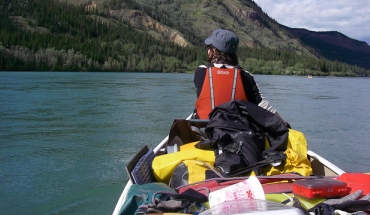
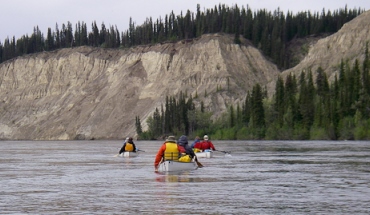
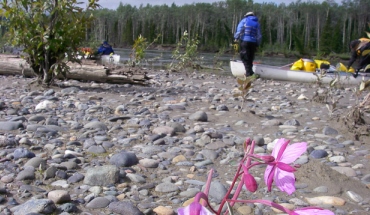
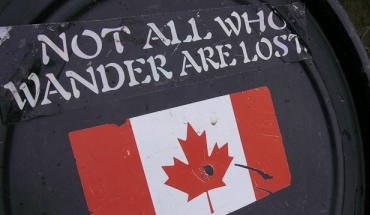
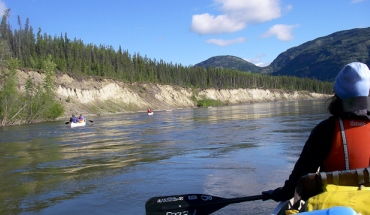
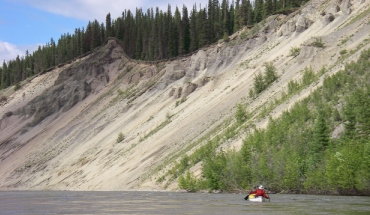
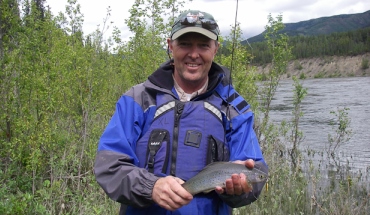
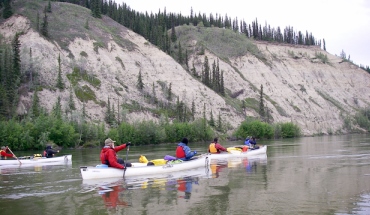
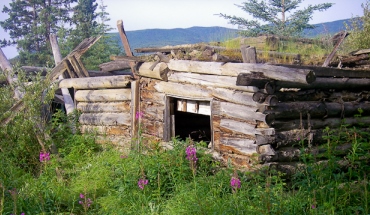
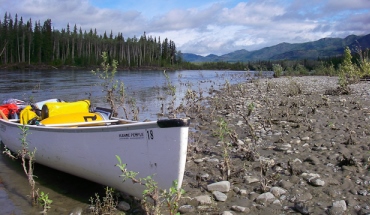
For any wilderness adventure, "layering" is one of the most critical concepts.
Layering clothing can have several advantages:
Temperature regulation: Layering allows you to adjust your level of warmth by adding or removing layers as needed. This can be especially useful in unpredictable weather or in environments with fluctuating temperatures.
Comfort: Layering can help you stay comfortable in a range of temperatures and activities. For example, if you're going for a hike, you can wear a base layer to wick sweat away from your skin, a mid layer for insulation, and a outer layer to protect against wind and rain.
Versatility: Layering allows you to mix and match different pieces of clothing to create different looks and adapt to different situations.
Style: Layering can add depth and interest to your outfit, allowing you to express your personal style and create a polished look.
Protection: Layering can also provide protection against the elements, such as wind, rain, and cold temperatures.